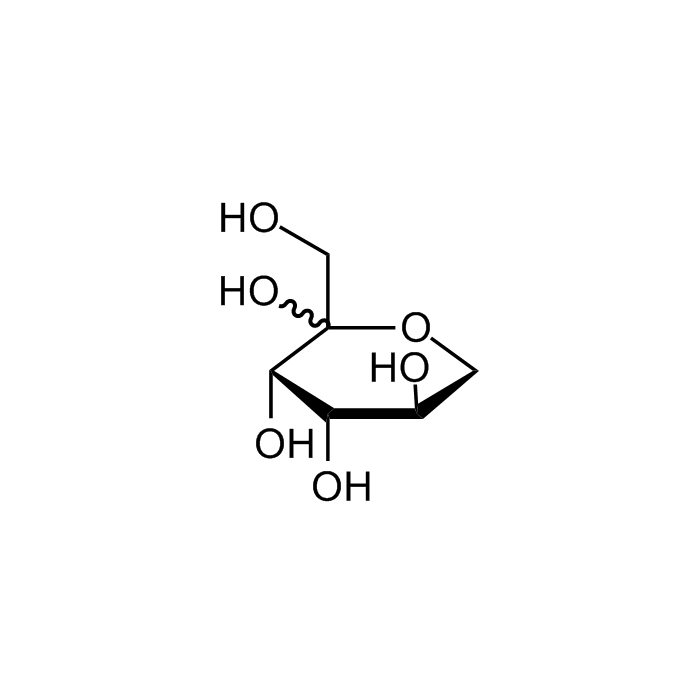Cookie Policy: This site uses cookies to improve your experience. You can find out more about our use of cookies in our Privacy Policy. By continuing to browse this site you agree to our use of cookies.
Chemodex
D-(-)-Tagatose

| Product Details | |
|---|---|
| Synonyms | D-lyxo-2-Hexulose |
| Product Type | Chemical |
| Properties | |
| Formula |
C6H12O6 |
| MW | 180.16 |
| CAS | 87-81-0 |
| RTECS | WW1100000 |
| Purity Chemicals | 98.5% (HPLC) |
| Appearance | White to off-white powder or crystals. |
| Solubility | Soluble in water. |
| Identity | Determined by 1H-NMR. |
| Declaration | Manufactured by Chemodex. |
| Other Product Data |
Click here for Original Manufacturer Product Datasheet |
| InChi Key | LKDRXBCSQODPBY-OEXCPVAWSA-N |
| Smiles | O[C@@H]1[C@H](O)C(CO)(O)OC[C@H]1O |
| Shipping and Handling | |
| Shipping | AMBIENT |
| Short Term Storage | +4°C |
| Long Term Storage | +4°C |
| Handling Advice | Protect from light and moisture. |
| Use/Stability | Stable for at least 2 years after receipt when stored at +4°C. |
| Documents | |
| Product Specification Sheet | |
| Datasheet |
 Download PDF Download PDF |
D-(-)-Tagatose, is a ketohexose acting as a low-calorie functional sweetener. It is a sugar substitute found in small quantities in nature and produced using a biotransformation method with L-arabinose isomerase as the biocatalyst and D-galactose as the substrate. Tagatose can be used as a preservative in cosmetic, detergent and pharmaceutical formulations. Tagatose is also used in diet soft drinks, chewing gum, frozen yogurt and non-fat ice cream. Potential sugar substitute rarely found in nature. Since it is metabolized differently from sucrose, tagatose has a minimal effect on blood glucose and insulin levels. Tagatose is also approved as a tooth-friendly ingredient for dental products. Tagatose has very similar sweetness to sugar while its glycemic index is very low. Tagatose reduces blood glucose level in the liver by promoting glucokinase activity which promotes transfer of glucose to glycogen. It also inhibits digestive enzymes and degradation of carbohydrates in small intestine which result in inhibition of carbohydrate absorption in the body. Tagatose has shown antioxidant, anti-aging, prebiotic, cytoprotective, antibcaterial and anti-antidiabetic/obesity properties.
(1) J.C. Paterna, et al.; Toxicol. Appl. Pharmacol. 148, 117 (1998) | (2) B. Buemann, et al.; Metabolism 49, 969 (2000) | (3) Y. Lu & G.V. Levin; Int. J. Cosmet. Sci. 24, 225 (2002) | (4) D.K. Oh; Appl. Microbiol. Biotechnol. 76, 1 (2007) (Review) | (5) Y. Lu, et al.; Diabetes Obes. Metab. 10, 109 (2008) (Review) | (6) K.J. Luecke & L.N. Bell; J. Food Sci. 75, C346 (2010) | (7) T.W. Donner, et al.; Nutr. Res. 30, 801 (2010) | (8) K. Hasibul, et al.; Mol. Med. Rep. 17, 843 (2018) | (9) S. Roy, et al.; J Food Sci. 83, 2699 (2018) (Review)





